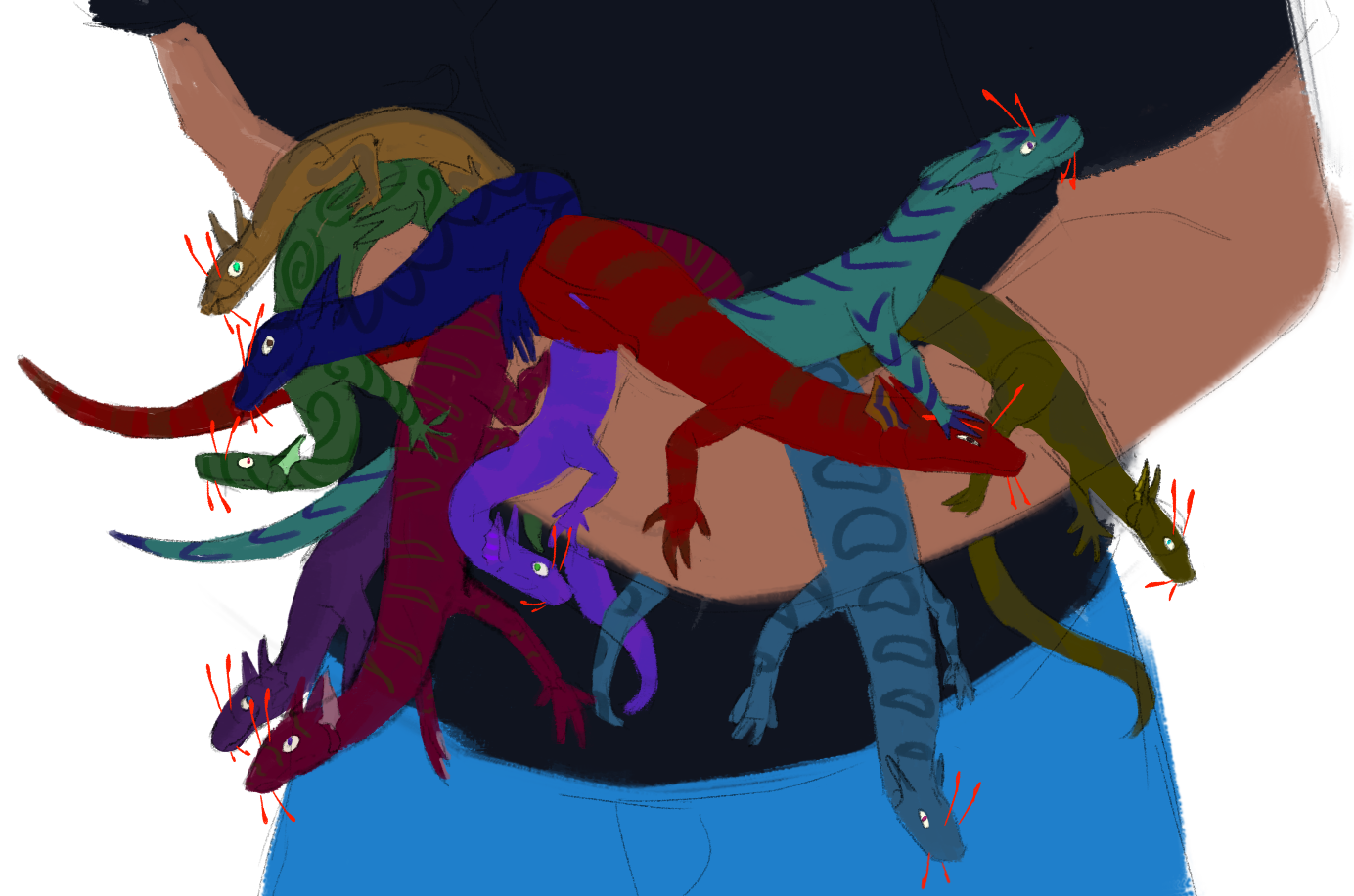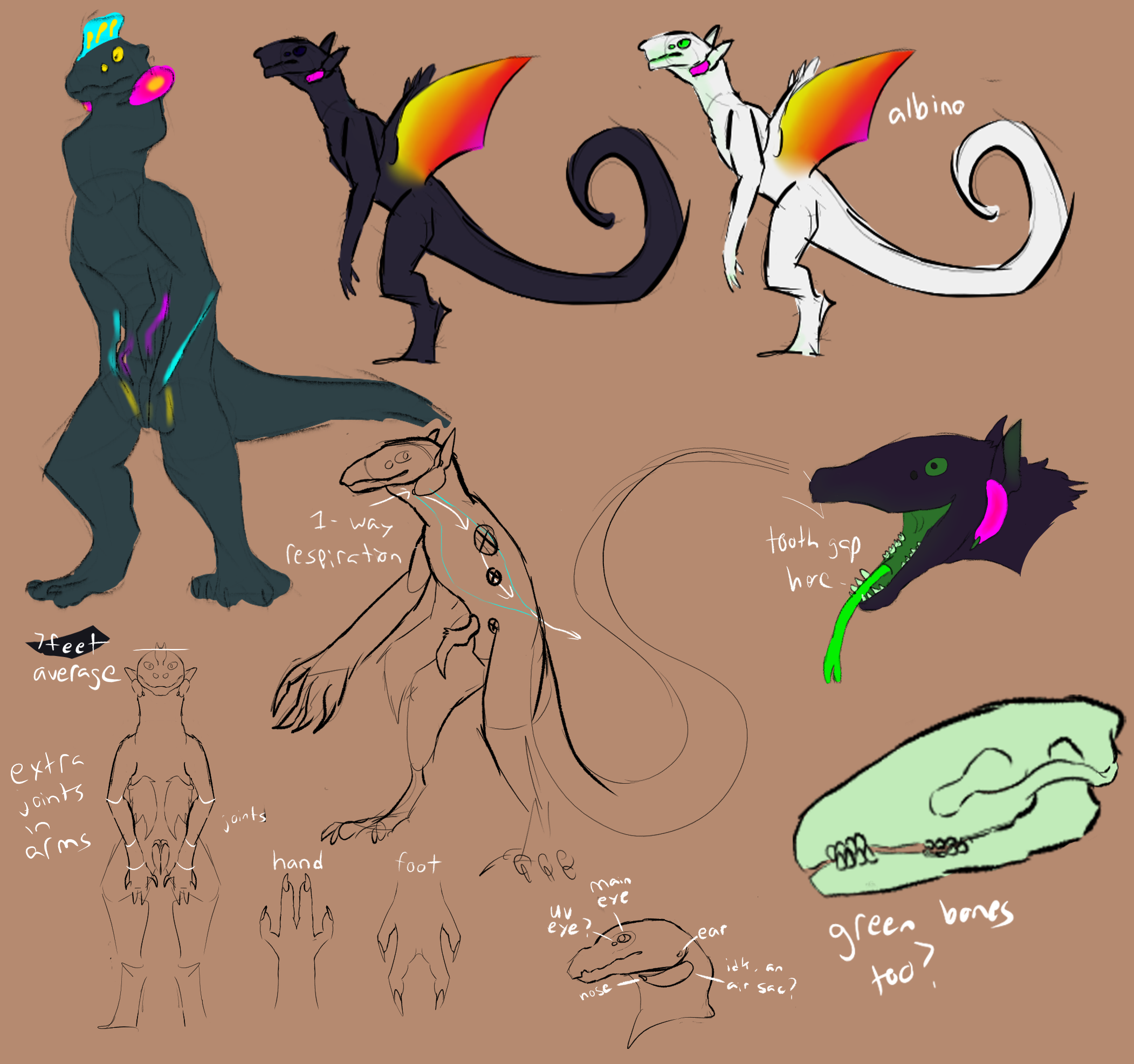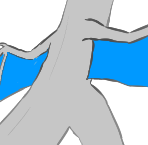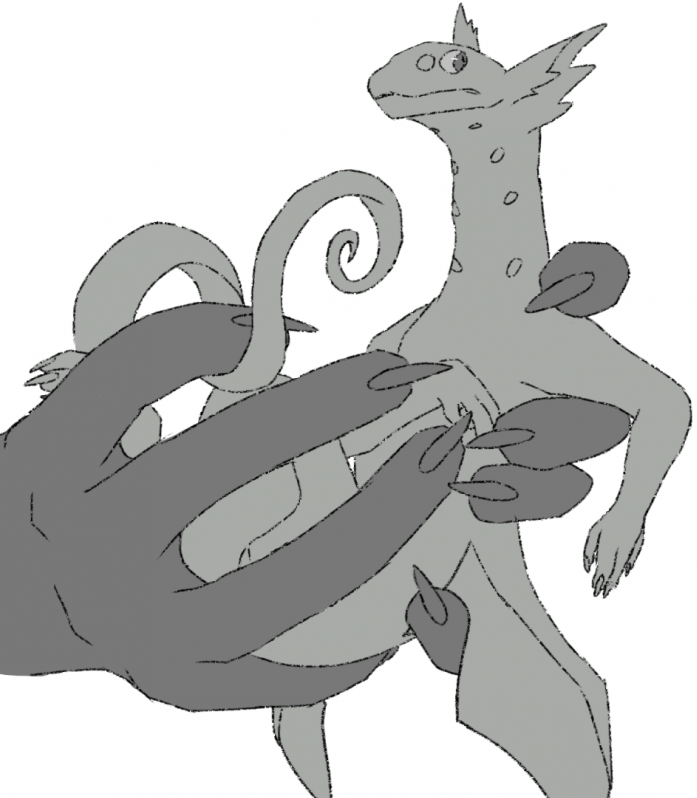HEXAPODs
| HEXAPOD | |

|
|
| Average Lifespan | 120 Years E |
| Average Height | 6-10 ft / 1.8-3 m |
| Preferred Temperature | 80°F / 26°C |
| Diet | Nectarivore |
Hexapods, frequently shortened to just "hex", were the first sapient extraterrestrial life form encountered by humans. After Voyager 2 made its way to their star system, they sent a vessel to investigate the source, eventually coming aross humanity and meeting them. First contact was tense, but went by peacefully. Being each other's first alien encountered, humans and hex are the closest of all sophont's and are officially united through the HHA.
Hex are private and asocial when compared to humans, being a species that lives in small groups of 2-5 partners rather than large groups like humans do. As a species, they find crowds and large open spaces to be overwhelming and uncomfortable, preferring to be alone in cramped underground spaces.
Biology
Hexapods have long, snake-like bodies with a peach fuzz texture on their skin. Similar to humans, they walk on their two hind legs and can hold and manipulate objects with their arms. Their primary sensory organs are all located on or around the head, the ears and nostrols being on the neck. Their joints are highly flexible and allow them to fit into a variety of poses that are useful for traversing the cramped terrain of their cave homes.
Hex can have a variety of markings and colors, but they still have some limitations in their appearance. Typically, they have a dark colored body with even darker markings on top. The markings are usually only one color. They can have stripes, spots, rings, etc. Skin pigment conditions may result in deviations from this.
They are capable of bioluminescence and can conciously control their glow using chemical reactions. Their antennae, dots, and genitals are all capable of glowing.
Their hands are symmetrical, with two fingers in the middle and one thumb on each side of the hand.
Hexapod blood is green. The oxygen carrier in their blood is hemoglobin, just like humans. But because their blood is full of the pile pigment biliverdin, their blood, muscles, and even bones are all lime green. This is why thin-skinned body parts such as the mouth and gular skin are a teal-ish green.
They speak through their tongues, which are long tubes that sort of function like a partially inverted throat. There's no other hole in the mouth, everything happens through the opening in the tongue.
Display Structures
Perhaps the most striking aspect of the hexapod is their elaborate display structures, which are used to impress potential mates. Since all hexapods are dual-sexed and can have multiple romantic partners, it is incredible important to make onself physically impressive. Not only are there a lot of others to choose from, but you also have multiple people to impress rather than just one!
Flags
A pair of bioluminescent antennae-like structures, two on top of the head and two at the chin. These are used in nonverbal communication and certain movements function like facial expressions would in humans.
The flags are tough and rooted into the head with strong muscles. A plucked flag will begin to regrow immediately, and a broken flag will eventually fall off on its own.
Gular Skin
Between a hexapod's nostrils and ears are symmetrical pouches of stretchy skin that can inflate like balloons. Air is taken in through the mouth, and a flap within the throat moves to block access to the lungs and open up access to the inside of the gular skin, filling it rapidly.
Socially, use of the gular skin is much more particular than other display structures. Inflating one's gular skin can either be extremely flirty, or extremely rude.
Glow Dots
The bright bioluminescent spots along a hexapod's neck, torso, and tail are called glow dots. These are flashed during mating dances, The first twelve are seen as highlighting body shape. The last six on the tail are considered to simply enhance tail movements. Outside of displays, lighting them up can be used to emphasize one's point when speaking. It's like if you could italicize spoken words.
Wings
Hexapods have a pair of small bat-like wings near their hips. The wing shoulder attaches towards the back of the torso, and the lower membrane connected right above the hips. They can not fly at all! They can't even glide! They wings are used only for display and for caring for hatchlings. And for regaining balance when one slips...
Diet
Hex feed primarily on liquids, using their tongues as straws. They will drink nectar, sap, fruit juice, honey, etc.
Reproduction
Hexapods have only one sex, with all members of the species have the same reproductive organs and abilities. More information coming soon.
They are oviparous, laying clutches of 1-4 eggs after a gravid period of around 24 hours. They do not nest, and rather carry their eggs with them in their wings. The eggs are light and sticky, and can be hidden in the folds of the wings easily. This is crucial to the development of the hatchling, as their ears form very rapidly and they are capable of listening to the world outside of their egg. Hearing adults speaking aids in their understanding of language.
Hatchlings can walk and run from the moment they hatch. Great importance is placed on allowing them the independence to go about on their own and explore their community. At this point, who their biological parents are does not matter. First time parents may be sentimental and place extra care on their own hatchlings, but otherwise they are raised communally, with everyone in the area being expected to care for them. If you visit an area with hexapods, do not be surprised if random children approach you and inform you that they want some of your drink.
Hex do not develop their display features until around 18-19 years old. Until then, their antennae are all solid red and their gular skin, glowing dots, and wing colors are undeveloped. It's speculated that hatchling antennae are red so that they can signal for an adult's protection when in danger, without alerting any night-time predators that can't see red light. Adult hex can have warm-colored antennae, but never solid red.

Gallery


Concept Art
Plus other general outdated art.
This section of the gallery is organized oldest to newest.














